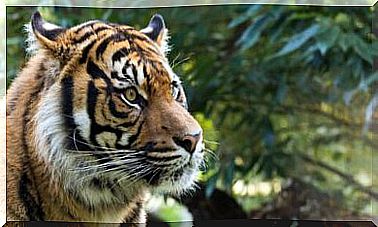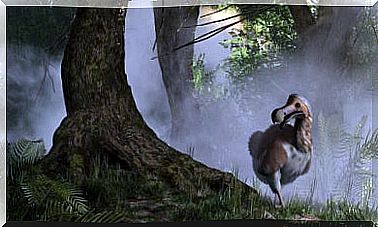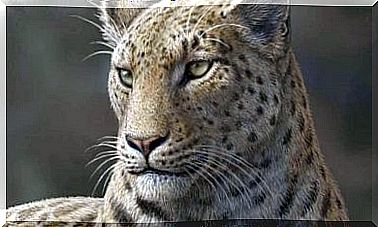Curiosities About The Porcupine
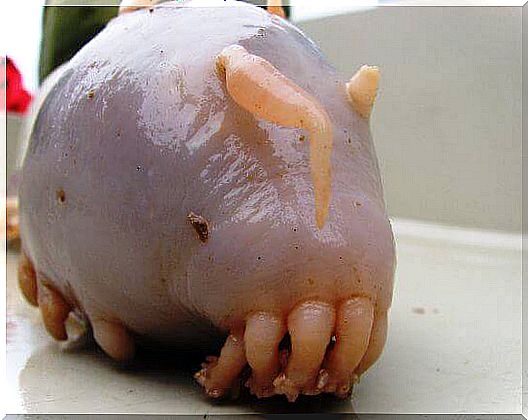
The porcupine lives in the deep waters of the oceans. It is a creature with a translucent body, tubular legs, present even on its head, which resemble antennae. Also, he has an appetite for decaying things.
Its scientific name is Scotoplanes globosa and is a species belonging to the echinoderm group, which includes sea cucumbers, urchins and starfish. It inhabits all the world’s oceans, and in some areas it represents 95% of the total volume of animals on the seafloor.
Some curious data from the sea porcupine
This animal was discovered by Swedish zoologist Johan Hjalmar Théel over a century ago. Since then, researchers have found that these creatures congregate around dead whales and other corpses sunk in the deep sea to feed on the decaying flesh.
The porcupine is present in every ocean on the planet
Perhaps you haven’t heard of the porcupine before, so you find it amazing to know that this species can be found in every ocean in the world. However, only those who enter very cold and deep waters, about 3.7 miles below the surface , will be able to see them.
That’s why scientists couldn’t get enough information about them. However, they infer that they are social creatures because they are always found in large quantities. It has also been noted that the number found depends on the size of the porcupines.
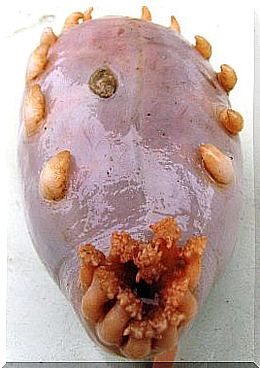
Groups of more than 1,000 individuals are usually made up of small sea pigs. Those groups in which the creatures are larger are reduced to about 100 copies per occupied space, approximately.
It’s not antennas, it’s also feet
The porcupine moves along the seabed with its five or seven pairs of tubular feet. These feet are appendages that can inflate and deflate to move. On the top of its head, the porcupine has structures that look like antennae but are actually feet.
These upper appendages are modified tubular feet, similar to those used for walking. However, the upper feet can help them propel themselves across the ocean. They are also believed to have a sensory function to detect the chemical trail of nearby food.
Large groups follow the same direction
The porcupine is usually found in large groups, especially when food resources are abundant: for example, when there are whale and other cetacean corpses on the seabed and they gather to eat.
What’s strange is that, when covering the ocean floor, everyone orients in the same direction. However, scientists have determined that this behavior is not due to chance.
The reason could be that the porcupine faces the prevailing current, perhaps to detect the decay of the food and find the best place to feed.
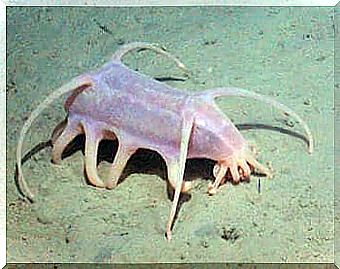
They serve as protection for young crabs.
The porcupine is not the only animal to live life at the bottom of the ocean. There are some small crabs and snails that could be easy prey for predators and therefore need protection. So many make the sea hogs their guardians and cling to them.
About 95% of the king crabs that stay in the depths cling to the sea hogs. Thus, it is difficult for researchers to detect these small crabs at first glance. This suggests that predators also have difficulty finding them.
They also tolerate other parasitic animals.
It is known that the king crab is not the only species that knows the goodness of the porcupine. A wide variety of animals, including snails, flatworms and even small fish, live inside the bodies of porcupines.
Certainly, life in the deep waters of the sea is a challenge, especially for younger, tiny animals who don’t know where to hide. Although the benefit to the parasitic animal is often evident, scientists are still trying to determine whether the porcupine gets anything from this relationship.
State of preservation and threats
The conservation status of the porcupine has not yet been officially assessed. However, they are not believed to be at risk of extinction due to their global distribution and the apparently abundant amount of the species.
Their biggest threat is the deepwater trawl, as a medium trawl sweeps, captures and, of course, kills 300 to 600 porcupines. In this sense, perhaps trawling should be classified as a practice that generates a serious problem for the future of several marine species.






